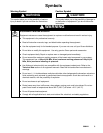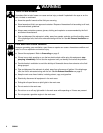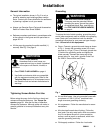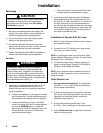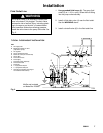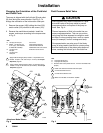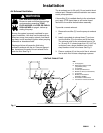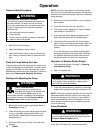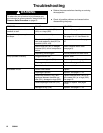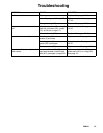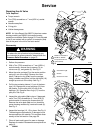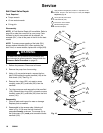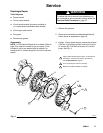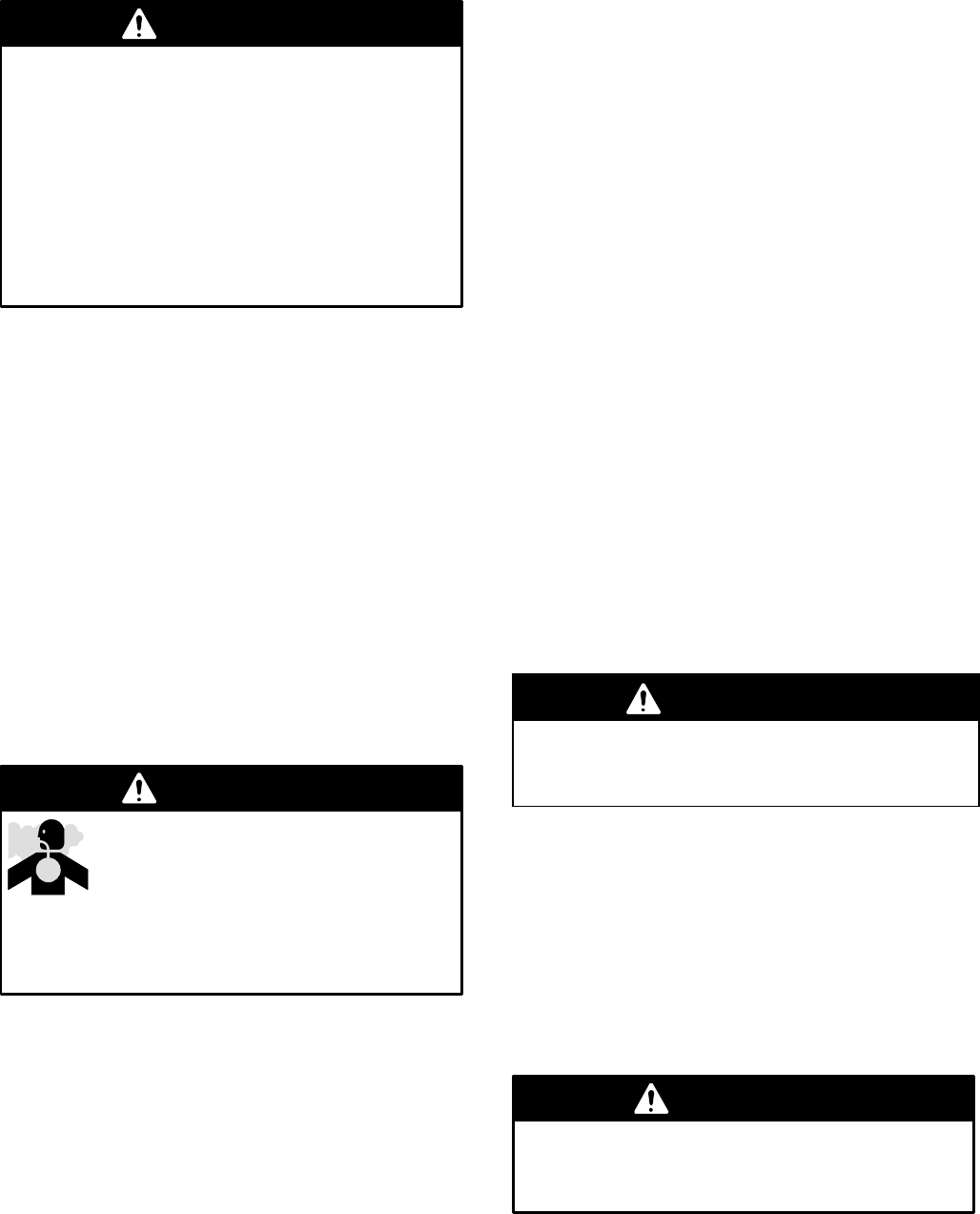
10 308441
Operation
Pressure Relief Procedure
PRESSURIZED EQUIPMENT HAZARD
The equipment stays pressurized until pressure is
manually relieved. To reduce the risk of serious
injury from pressurized fluid, accidental spray from
the gun or splashing fluid, follow this procedure
whenever you:
D Are instructed to relieve pressure,
D Stop pumping,
D Check, clean or service any system equipment,
D Install or clean fluid nozzles.
WARNING
1. Shut off the air to the pump.
2. Open the dispensing valve, if used.
3. Open the fluid drain valve to relieve all fluid pres-
sure, having a container ready to catch the drain-
age.
Flush the Pump Before First Use
The pump was tested with lightweight oil, which is left
in the fluid passages to protect parts. To avoid contam-
inating your fluid with oil, flush the pump with a com-
patible solvent before using the equipment. Follow the
steps under Starting and Adjusting the Pump.
Starting and Adjusting the Pump
TOXIC FLUID HAZARD
To reduce the risk of serious injury,
splashing in the eyes or on the skin, and
toxic fluid spills, never move or lift a
pump under pressure. If dropped, the fluid section
may rupture. Always follow the Pressure Relief
Procedure above before lifting the pump.
WARNING
1. Be sure the pump is properly grounded. Refer to
Grounding on page 5.
2. Check all fittings to be sure they are tight. Be sure
to use a compatible liquid thread sealant on all
male threads. Tighten the fluid inlet and outlet
fittings securely.
3. Place the suction tube (if used) in the fluid to be
pumped.
NOTE: If the fluid inlet pressure to the pump is more
than 25% of the outlet working pressure, the ball check
valves will not close fast enough, resulting in inefficient
pump operation.
4. Place the end of the fluid hose (L) into an appropri-
ate container.
5. Close the fluid drain valve (J). See Fig. 2.
6. Close the pump air regulator (C). Open all bleed-
type master air valves (B, E).
7. If the fluid hose has a dispensing device, hold it
open while continuing with the following step.
8. Slowly open the air regulator (C) until the pump
starts to cycle. Allow the pump to cycle slowly until
all air is pushed out of the lines and the pump is
primed.
If you are flushing, run the pump long enough to
thoroughly clean the pump and hoses. Close the
air regulator. Remove the suction tube from the
solvent and place it in the fluid to be pumped.
Operation of Remote Piloted Pumps
1. Follow preceding steps 1 through 7 of Starting
and Adjusting Pump.
2. Open air regulator (C).
WARNING
The pump may cycle once before the external sig-
nal is applied. Injury is possible. If pump cycles,
wait until end before proceeding.
3. Pump will operate when air pressure is alternately
applied and relieved to push type connectors (14).
NOTE: Leaving air pressure applied to the air motor for
extended periods when the pump is not running may
shorten the diaphragm life. Using a 3–way solenoid
valve to automatically relieve the pressure on the air
motor when the metering cycle is complete prevents
this from occurring.
Pump Shutdown
WARNING
To reduce the risk of serious injury whenever you
are instructed to relieve pressure, always follow the
Pressure Relief Procedure at left.
At the end of the work shift, relieve the pressure.




